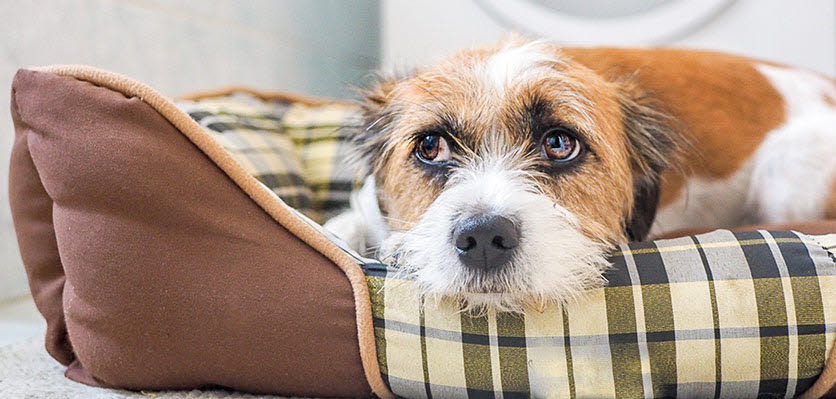How to deal with separation anxiety in dogs

Dogs are social creatures – they love our company and they make great companions. Unfortunately, this attachment can also cause problems if they get upset, anxious and destructive when left alone.
Separation anxiety is one of the most common behavioural issues in dogs, leading to issues such as constant barking, whining and destruction around the home. Here are a few ways to deal with it.
Ideally, you need to teach your dog how to be calm and relaxed when you are away from home. This might involve changes in how you interact with your dog, changes in leaving and returning routines, teaching your dog how to be comfortable alone as well as other changes to the environment.
AVA supports the use of reward-based training rather than punishment, as it is more effective as well as more humane. With this in mind, owners should try to ignore the bad or attention-seeking behaviour of their dog, while rewarding (with treats, attention or toys) good behaviour, such as being calm and relaxed.
Leaving routines
Keep departures as low key as possible. Experts recommend ignoring your dog for between 15 to 20 minutes before you leave the house. This allows them to become more self-sufficient and independent on your departure. You can also vary your leaving routine, so the dog doesn’t become anxious when you get ready to go, thus working him/herself into anxiety in preparation. Many owners find it helpful to leave a special treat or a ‘kong’ (a toy filled with a treat) upon leaving, which can occupy your dog for the first 15-20 minutes and help them through the first few moments of being alone. This practice will also help your dog to associate your departure with a pleasant experience. Remove the toys when you return, so the treat is connected with your departure.
Leave lots of toys for your dog to play with when you are gone (you can even hide them around the house to add to the game). Many owners find it helpful to rotate toys, hiding some for a few weeks so they can be reintroduced at later times to prevent boredom.
Physical exercise can also help. Try to exercise your dog before you have to leave (such as a long morning walk before you leave for work). If you have access to a dog park, allow your dog to run around off-leash to expend energy. This should help him relax and rest while you’re gone.
Returning home
Again, it’s important to reward good behaviour. If your dog jumps up or is overly excited or aggressive on your return, ignore them until they are calm, then reward them with attention or treats. Sometimes, too, an evening walk can help them calm down and use up excess energy if they are restricted to a small space during the day.
Some owners also try to come home during the middle of the day, or even use a dog walker to give their dog companionship and exercise while they are out. This also helps the dog to connect with others and not be totally reliant on their owner.
Severe anxiety
In some cases, separation anxiety can be severe with the dog causing damage, distressing neighbours with constant barking or hurting themselves. If this is the case, speak to your veterinarian. He or she should be able to talk to you about possible medication for your dog, give you some additional advice, or they may able to refer you to a behavioural specialist who uses humane reward-based training.
